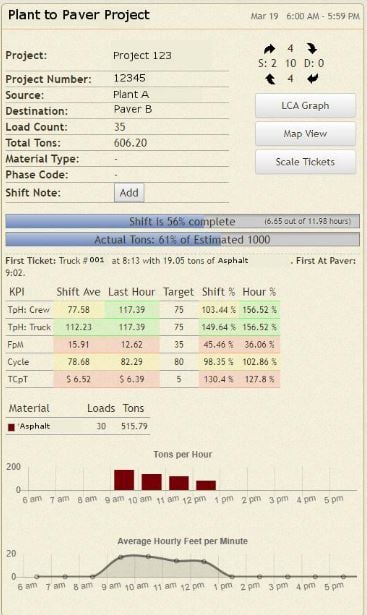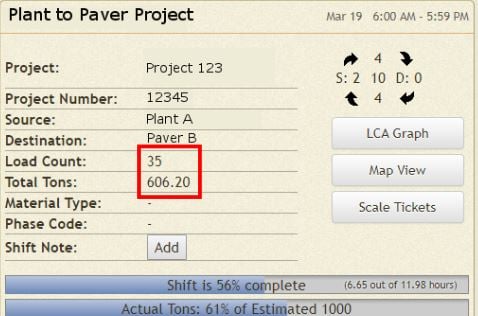How long are your trucks waiting at the paver? How many tons per hour are you really putting down? Does your estimate have too high of a cycle time?
KPIs or Key Performance Indicators are becoming a much more common tool as more and more construction companies are adopting technology into their paving operations. KPIs are used to keep your jobs running smoothly and efficiently, to keep your costs down, and they give you real-time visibility in the field. Using a paving software like Fleetwatcher allows for you to connect your tracking devices to your scale loadout software to generate vital numbers that you can use to compare to your estimated benchmarks. Setting target parameters allows you to see in real-time how you are performing against your own expectations.
What are some examples of important KPIs to track?
- Tons per Hour – Crew: Measures the number of tons dumped per hour from shift start to shift end
- Tons per Hour – Truck: Measures the number of tons dumped per hour from first load to last dump
- Feet per Minute - Measures the distance traveled per minute by the paver (destination) designated on the shift
- Cycle Time - Measures the cycle time across all trucks, ticket-to-ticket
- TCpT (Trucking Cost per Ton) - Measures your total trucking cost against the tonnage put down
Let’s take a look at an example of a shift card from FleetWatcher that is measuring KPIs.

And now, let’s take a look at the top section of the shift card and dive deeper into a couple of examples:

You can see that 35 loads of material have been associated with this shift so far, for a total of 606.20 tons loaded. These have been carried by 10 FleetWatcher- mapped trucks that have hit both the Source Plant A and Paver B. At the time of the shift review, just over 6 ½ hours of the 12-hour shift had elapsed, so the Shift Completion Bar is reflecting that the shift is 56% complete. The target total tonnage for this shift was set at 1,000 tons. At the time of the shift review, the 606.20 tons loaded is reflected as 61% of the target goal on the Actual Tons Bar.
KPIs – What Do They Mean for you and your business?
KPIs provide valuable insight into your shifts as they are running – numbers that are not easily obtained through any other means and allow you to make real-time decisions about adding or removing trucks, switching out a paver or rerouting trucks due to longer-than-expected travel times. By providing the data in real-time and compiling it for future review, you will be able to be more aggressive with your job bids, accurately pay drivers from clock-in to clock-out and see how well your jobs performed over the course of time.

